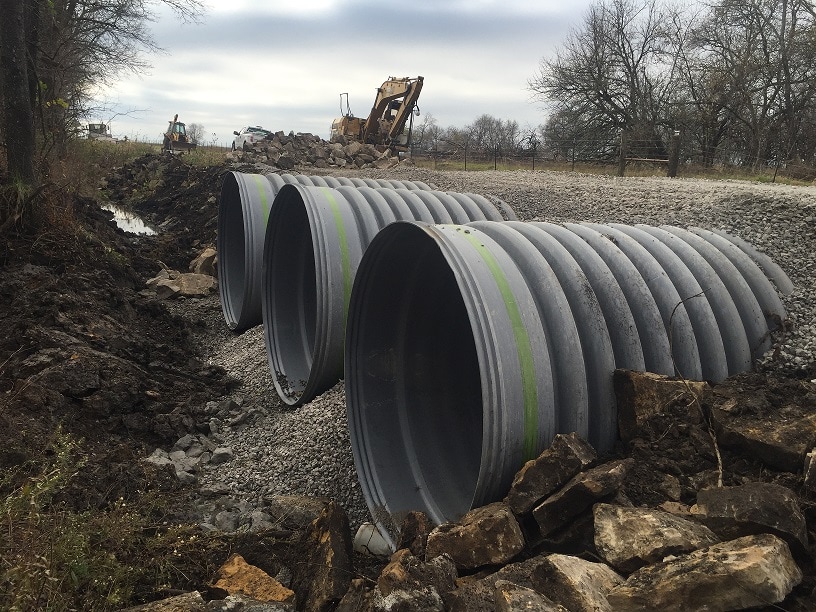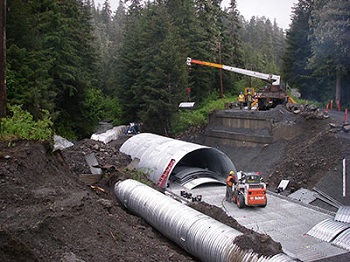Understanding Culvert Installation: Boost Your Land Drain Efforts
From selecting the ideal products to carrying out best methods, grasping culvert installment can considerably improve the effectiveness and long life of your land drain system. By recognizing the ins and outs of culvert installment, you can enhance your drain efforts and ensure sustainable land usage methods.
Value of Culvert Setup
Making certain proper culvert setup is paramount for preserving reliable land drain systems. Culverts play a vital role in handling water flow, stopping disintegration, and keeping the structural integrity of roadways, bridges, and other framework. Appropriate installation of culverts helps to carry water far from roadways and buildings, minimizing the danger of flooding and water damage. Furthermore, well-installed culverts help in preventing debris buildup, which can cause clogs and reduced water flow.
Appropriate Sizing and Placement

Proper positioning of culverts is equally vital. Culverts need to be positioned at the most affordable point of the area requiring drainage to make certain efficient water flow. Furthermore, they must be set up vertical to the natural slope of the land to stop clogs and enable smooth water passage. Strategic placement can aid protect against waterlogging, soil erosion, and road damages, making sure the durability and efficiency of the land drainage system.
Material Choice Tips
Selecting the appropriate products is extremely important in guaranteeing the sturdiness and capability of culverts for reliable land drain systems. When selecting materials for culvert installment, it is important to take into consideration elements such as the water circulation price, dirt structure, and environmental conditions of the website.
One of the most common materials used for culverts is corrugated metal. Concrete culverts are ideal for locations prone to corrosion or when a longer service life is wanted.
For ecologically delicate areas, plastic culverts might be chosen. Plastic culverts are lightweight, immune to rust, and very easy to transfer find more information and mount. They are additionally understood for their smooth interior, which aids to preserve effective water circulation. In addition, in locations where all-natural looks are necessary, materials like stone or timber can be used to build culverts that blend seamlessly into the surroundings. Ultimately, the choice of material should be based upon an extensive assessment of the details demands and problems of the land drain task.
Installation Techniques and Ideal Practices
Offered the vital significance of material option in guaranteeing the capability and long life of culverts, the installment techniques and ideal methods play a crucial role in the general success of land water drainage systems. Correct installation is key to avoid issues such as leakages, falls down, or obstructions that can endanger the efficiency of the culvert.

During setup, treatment should be taken to align the culvert appropriately and provide correct assistance to avoid contortion. Backfilling needs to be done gradually and compacted in layers to prevent gaps and negotiation. Correct compaction is vital to stop shifting or sinking of the culvert with time.

Maintenance and Long-Term Treatment
Carrying out a thorough maintenance plan is crucial for ensuring the longevity and efficient performance of culverts in land drain systems. Routine inspections should be conducted to check for any indications of damages, obstructions, or erosion that could jeopardize the capability of the culvert. Clearing particles such as leaves, branches, and debris is important to avoid blocking and preserve the flow ability of the culvert. Plants control around the culvert area is likewise essential to avoid origins from triggering architectural damages.
Routine maintenance jobs may consist of cleansing, fixing joints, strengthening inlet and electrical outlet structures, and ensuring appropriate slope and alignment of the culvert. Maintaining detailed records of maintenance activities, evaluations, and repair services is crucial for tracking the problem of the culvert over time and preparing future upkeep needs.
Verdict
Finally, mastering culvert setup is vital for reliable land drain. anonymous Proper sizing, positioning, product option, installation techniques, and maintenance are vital aspects to take into consideration. By complying with best methods and implementing lasting care strategies, landowners can increase their drainage initiatives and guarantee the long life and performance of their culverts. It is important to prioritize these aspects to stop water damage, erosion, and various other pricey issues on the home.